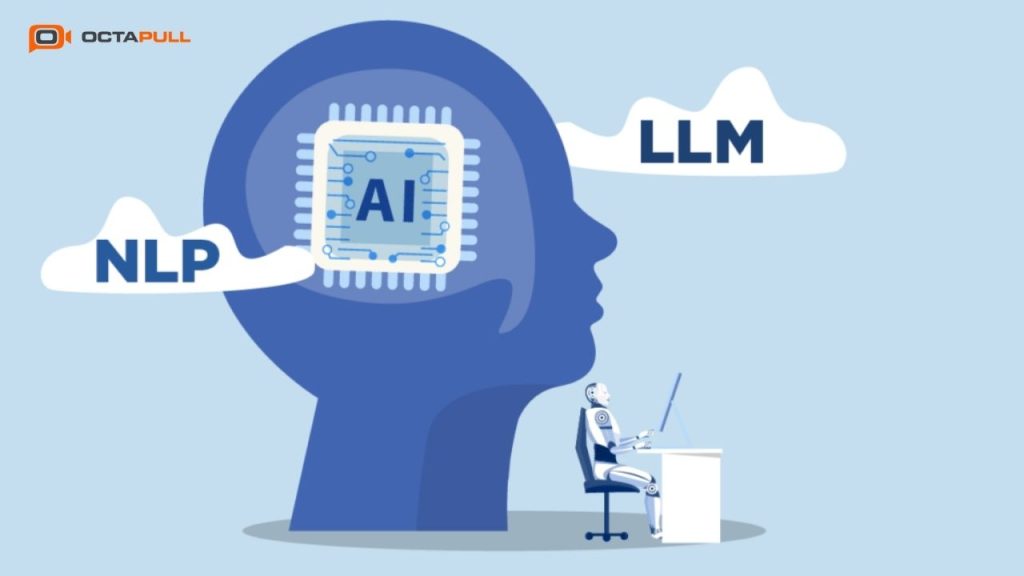In today’s rapidly evolving AI-driven industries, businesses are increasingly turning to language models to streamline communication, automate tasks and increase customer engagement. But with all these new technologies, choosing the right language model can be a little confusing at times.
Natural Language Processing (NLP) and Large Language Models (LLMs) are two key elements in this space, each offering unique capabilities. With AI adoption skyrocketing, it’s more important than ever to understand the differences between these tools. Knowledge of language models is essential for making informed decisions that will take your organization to the next level.
In this blog post, we will explore NLP and LLMs, highlighting their strengths, key differences and how to determine the best fit for your AI strategy.
Understanding NLP and LLM: What Are Language Models Used For?

Natural Language Processing (NLP) is a fundamental technology that enables machines to understand, interpret and respond to human language.
Traditionally, NLP enables the development of tools such as spell checkers, chatbots, sentiment analysis engines and document classifiers. This language model is especially used to structure a rule-based or statistical approach and automate repetitive tasks.
Large Language Models (LLMs), on the other hand, represent the next evolution in language model technology. Built on deep learning and trained on massive datasets, LLMs like GPT and PaLM can create content, summarize long texts, translate languages and even write code. They offer contextual understanding far beyond the capabilities of early NLP systems.
At their core, both NLP and LLMs are used to process and understand language, but LLMs can be said to bring a new level of flexibility, creativity and depth to today’s tools. They are particularly useful when processing complex queries or ambiguous, unstructured data.
What Are the Differences Between LLM and NLP?

The main difference between these two models is how they work. NLP systems are usually specific to single tasks and are based on rules or lightweight machine learning models. They are good value for money and work well for specific tasks like extracting keywords or classifying goals.
LLMs are pre-trained on lots of data, so they can do lots of different tasks without needing separate language models for each one. They can adapt to many different uses, so are useful in many different industries, such as virtual assistants or checking content online.
Another key difference is how well they perform and their infrastructure. NLP tools don’t need much computing power, but LLMs do and they often work in a way that’s hard to understand. But this can be exchanged for more sophisticated and human-like interactions.
Which Language Model Is More Suitable for Your AI Needs?

Let’s start with a simple example. If your business needs efficient, rule-based systems for specific tasks, such as document tagging or simple FAQ bots, NLP might be the smarter choice. It can be used in any kind of office, and it is cheap and very reliable.
However, if your operations involve complex conversations, creating content or understanding data from different areas, LLMs can be a better solution that can be used more widely. They are especially useful for customer service, internal knowledge bases and multilingual support.
In the end, the choice between NLP and LLMs depends a lot on your business goals, how complicated your data is, and how much time and money you have. NLP is great for specific tasks, but LLMs offer even more advanced AI capabilities and a deeper understanding of context.
At Octapull, we understand the need to match the right technology with your communication and automation goals. If you’re looking to use simple NLP tools or more advanced LLM solutions for your business, our platform can help you with your digital transformation using AI.

Leave a Reply